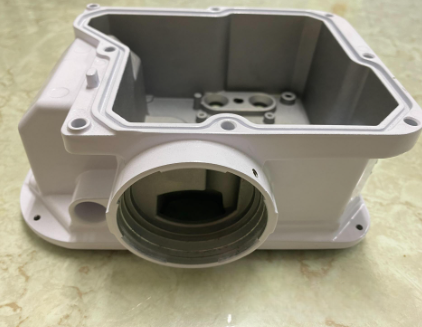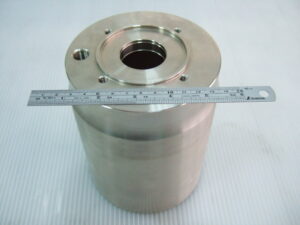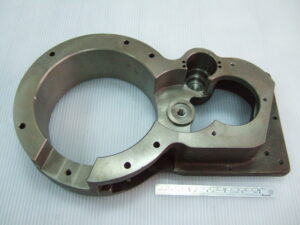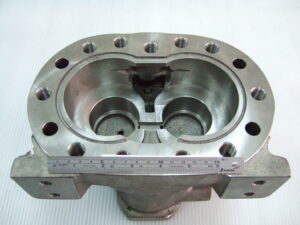
CNC machining of aluminum casting parts presents unique challenges that require careful consideration to ensure high-quality, precision components. Aluminum casting is widely used across industries like automotive, aerospace, and electronics due to its lightweight nature, excellent corrosion resistance, and thermal conductivity. However, the material’s inherent characteristics, combined with casting defects, can complicate machining processes. In this article, we’ll explore key issues that manufacturers need to consider when performing CNC machining on aluminum casting parts, focusing on material condition, tool selection, cutting speeds and feeds, and coolant application.
1. Material Condition
The condition of aluminum casting parts plays a critical role in CNC machining. Certain inherent properties and defects in cast aluminum must be considered to ensure smooth and efficient machining operations.
1.1 Porosity
One of the primary concerns when machining aluminum casting parts is porosity. During the casting process, gas can get trapped within the molten aluminum, leading to small voids or pores within the material. This porosity can cause issues like tool chatter, surface roughness, and even component failure, particularly in parts subjected to high mechanical stress. For CNC machining, porosity affects the stability of the material under cutting forces, leading to potential deviations in part dimensions or even cracking.
To address this issue, manufacturers can conduct pre-machining inspections to identify highly porous areas and adjust cutting strategies to avoid those sections. Using specialized tooling designed for aluminum can also help mitigate the impact of porosity during machining.
1.2 Surface Hardness
Another significant challenge in CNC machining of aluminum casting parts is surface hardness. Although aluminum is generally considered a soft metal, the casting process can lead to variations in surface hardness due to the cooling rates and alloy composition. Harder regions on the surface can cause uneven tool wear and reduce the life of the cutting tools, leading to frequent tool changes and increased production costs.
To overcome this, it’s essential to use cutting tools that are not only designed for aluminum but can also handle variations in hardness. Additionally, manufacturers may consider heat treatment or surface conditioning processes before machining to create a more consistent hardness across the casting.
2. Tool Selection
Choosing the right tools is critical for achieving precision and efficiency in CNC machining of aluminum casting parts. Aluminum is a highly ductile material, and without the appropriate tools, it can cause issues like burrs, built-up edges, and poor surface finishes.
2.1 Coated Tools
For CNC machining on aluminum casting parts, coated tools offer significant advantages. Tools coated with materials like titanium nitride (TiN) or diamond-like carbon (DLC) are ideal because they reduce friction and prevent aluminum from adhering to the tool’s surface. This minimizes tool wear and enhances the overall cutting performance, leading to a smoother surface finish and longer tool life.
Another benefit of coated tools is their ability to handle the higher cutting speeds typically used with aluminum. The coating provides thermal protection to the tool, preventing excessive heat buildup and helping to maintain sharper cutting edges for a longer period.
2.2 Sharp Cutting Edges
Using sharp cutting edges is crucial for CNC machining of aluminum. Since aluminum is a soft and ductile material, dull tools can lead to poor chip evacuation and the formation of burrs, which can damage the part’s surface. Sharp tools ensure clean cuts and efficient material removal, reducing the risk of surface imperfections and improving the overall quality of the machined part.
To optimize performance, manufacturers should frequently inspect and replace dull or worn tools to maintain cutting efficiency and ensure the best possible results for aluminum casting parts.
3. Cutting Speeds and Feeds
One of the defining characteristics of CNC machining for aluminum is the use of higher cutting speeds and appropriate feed rates. Aluminum’s high machinability allows for more aggressive cutting conditions compared to other metals like steel.
3.1 High Cutting Speed
High cutting speeds are essential when machining aluminum casting parts, as they enable faster material removal rates while maintaining a high-quality surface finish. Aluminum’s low hardness allows CNC machines to operate at speeds that would otherwise damage harder metals. Typically, cutting speeds for aluminum can range from 600 to 2000 surface feet per minute (SFM), depending on the alloy and tooling.
Using high-speed machining techniques, manufacturers can reduce cycle times, increase productivity, and improve surface finish. However, it is crucial to monitor tool wear closely at these higher speeds, as excessive wear can degrade precision.
3.2 Feed Rate
While high cutting speeds are ideal for aluminum, the feed rate should also be optimized to balance between speed and tool life. A feed rate that is too aggressive can result in poor surface finish, while a slower feed rate can reduce production efficiency. For aluminum casting parts, a higher feed rate can usually be employed, ensuring smooth chip evacuation and reducing the risk of tool clogging.
By fine-tuning the cutting speeds and feed rates, manufacturers can optimize both productivity and quality, achieving efficient machining without compromising the surface finish or dimensional accuracy of the aluminum casting parts.
4. Coolant and Lubrication
Cooling and lubrication are critical components in CNC machining, especially for materials like aluminum, which are prone to heat buildup during machining.
4.1 Coolant Use
Applying coolant during CNC machining of aluminum helps to dissipate heat, preventing tool overheating and material warping. Aluminum’s high thermal conductivity means it quickly absorbs and transfers heat, making effective cooling essential for maintaining tool life and machining accuracy.
A steady stream of coolant directed at the cutting zone can help remove heat and chips, preventing material buildup on the tool and allowing for smoother cuts. Coolant also reduces friction, further extending tool life and improving the surface quality of the finished part.
4.2 Flood Cooling
For more intensive CNC operations, flood cooling is often used to provide continuous lubrication and cooling. This method ensures that the cutting area remains at an optimal temperature, minimizing the risks of thermal expansion or warping in the aluminum casting parts.
Flood cooling also helps in chip evacuation, preventing chips from becoming re-entangled with the cutting tool, which can lead to scratching or other surface defects. By maintaining proper cooling throughout the machining process, manufacturers can achieve consistent results and prolong tool life, even when machining at high speeds.
Conclusion
When CNC machining aluminum casting parts, careful attention must be paid to the unique challenges posed by the material. Issues such as porosity and surface hardness can impact machining performance, but with the right tool selection, cutting parameters, and cooling strategies, manufacturers can overcome these challenges. By optimizing every aspect of the machining process—whether it’s choosing coated tools, adjusting cutting speeds, or ensuring proper coolant application—manufacturers can achieve high-quality results and maximize efficiency in machining aluminum casting parts.
For industries relying on CNC turning parts machining, CNC machine milling parts, and CNC turned parts manufacturers, these key considerations are crucial for maintaining competitive production capabilities and delivering superior products.




